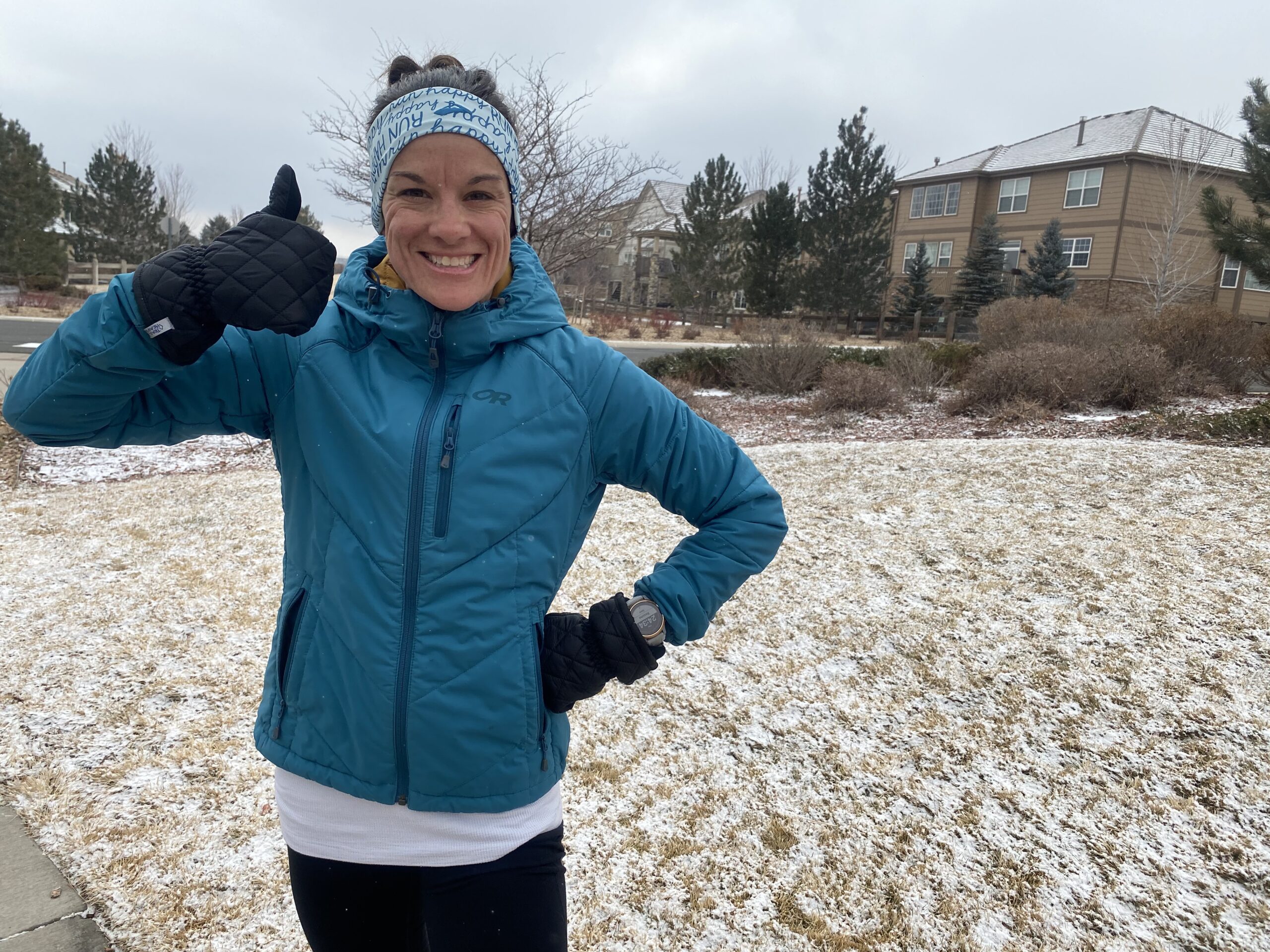The half marathon distance brings on a new set of a challenges you likely didn’t have to consider when training for your shorter races. Though there is plenty to learn, with the right knowledge you can have a great race even as a beginner!
If you’re embarking on training for your first half marathon, you’ll need to be sure you’re training with the right mileage, at the right pace, for the right number of weeks, with the right clothing, and the right…well, you get the idea!
Remember that everyone starts somewhere, so if you’re training for a half marathon as beginner, we promise you’re in good company. We’ve put together this comprehensive guide to get you on your way!
Beginner Half Marathon Training – Getting Started
Thinking about the prospect of running your first half marathon, you’re probably wondering when would be a good time to go for it.
To start, it’s important to be motivated by and invested in the race distance you want to complete. After all, training for a half marathon is a long process that can get tedious as you build up your strength and stamina for several weeks.
Excitement for your goal of completing a half marathon race will keep you going on the tough days. You have to be willing to put in the hard work over time to get to the finish line, and excitement about your goal is key.
Knowing You’re Ready to Train for a Half Marathon
Beyond the desire to complete a half marathon, there are other factors to consider as you weigh your readiness for the half marathon distance.
Here’s a list to help you know if you’re ready to train for a half:
- You’ve been running or walking consistently over the past several weeks
- You’ve been running at least 3 days each week
- Your schedule allows you to set aside time to train appropriately knowing this time will build as the training goes on
- You’ve trained for and completed several shorter races, such as 5ks and 10ks and feel ready for more
- You’re injury-free
If you said yes to each of those, you’re most likely ready to take on the half marathon! And if not, that’s ok, too…we recommend working on running consistently and building up your base mileage over the next few months, so both your mind and body are ready to train and have a great experience.
Gear to Begin Half Marathon Training
Half marathon training does not require a lot of gear to get started, contrary to what social media leads you to believe. Like most sports, you can go all-out with shopping for running gear if you want to, but just know you really only need a handful of the major items that you likely already own. For your first half marathon training cycle, the only things that you’ll really need at the outset are:
Proper running shoes – Our best shoe advice is to visit your local running shoe store and get fitted for at least 1 pair of comfortable running shoes. Though its sometimes necessary to rely on internet reviews to make your choice it’s best to go in-person. Running store employees are trained to observe your unique gait and biomechanics in order to make shoe recommendations. We all have differing perceptions about what feels comfortable. You do not want to be stuck with expensive running shoes that hurt or pinch, or that make you dread running so it’s nice to get them fitted just for you.
With that said, we know online shopping just works better for some, so here’s our guide for how to buy running shoes online with a couple of recommendations of companies with great return policies.Sweat-wicking athletic clothing – With as many athletic clothing options out there that help runners stay dry and comfortable, there’s no reason to wear a cotton t-shirt and sweats. Modern performance fabrics are designed to wick sweat, prevent chafing and not weigh you down. You don’t have to spend a lot of money to find high quality pieces; Amazon (Baleaf is a brand we recommend), Target, and Old Navy all sell inexpensive workout clothing that consistently receive high reviews online.For a little higher end wear, Lululemon and Nike are great go-tos with many options specifically designed for runners.
GPS running watch or phone app – A running watch with GPS capabilities, or a running app on your phone, such as MapMyRun or RunKeeper, is necessary to keep accurate track of all the distance you’ll be logging over the course of your half marathon training cycle. Tracking your mileage/kilometers via GPS helps ensure that you run the miles that are prescribed by your training plan.
Portable water bottle, or running hydration vest – Staying hydrated is crucial during half marathon training. You’ll need to bring water along, especially on your long runs. Nathan is a brand we highly recommend.
- Fuel – fueling during your runs may be new to you if you’ve only been running shorter distances. For any runs over 75 minutes, you’ll want to take in some carbohydrates during. Though any carb-rich food that’s easy to digest will work, most runners find having gels on hand is convenient and works best. You can find a list of our favorites in this article.
Choose Your Beginner Half Marathon Training Plan
To properly train for a half marathon – and to avoid injury as much as possible – it’s best to follow a training plan. There is a plethora of beginner half marathon training plans to choose from online – many of which are free (including ours at the bottom of this post)!
When you’re comparing training plans, look carefully at what each plan entails. Take note of:
how many weeks the training plan is
how many days per week of running are required
the peak weekly mileage you’ll reach
the number of miles you’ll be running in your first week
how far your longest long run will be
It’s incredibly important to choose a beginner half marathon training plan that aligns closely with where you are as a runner right now. For instance, we would strongly caution a runner to choose a plan that starts at 25 miles per week, when they’re only currently running 10 miles per week.
Note whether the plan you’re considering contains mileage cutback weeks approximately every 3-4 weeks. Cutback weeks are beneficial for your body to strengthen and absorb all the work it’s been doing, while giving it a bit of a break, too.
You may also want to consider building an extra week or two into your beginner training plan for unforeseen situations that may arise, such as illness, over the course of your training. That way, when life happens – as it inevitably does – you have a bit of buffer to accommodate disruptions in your training schedule.
If following a general half marathon training plan for beginners doesn’t seem like the right fit, and you’d like more of a personalized plan, consider hiring a running coach! Running coaches are not just for “fast” or “elite” runners. Coaching service options from Ready.Set.Marathon can be found here.
Top Tips for Training For Your First Half Marathon
1.) Walk First, Then Run
There is no shame in walking when you’re a runner – beginner or not! Walking breaks are especially helpful when you’re first starting out and your fitness level is not yet at the point where you’re able to run nonstop for several minutes.
If you’re just starting out with running, you might try brief intervals of walking mixed with short bursts of running. Over time, you can start to extend the amount time you run, while shortening the time you walk.
This gradual approach is beneficial for your muscles, bones and joints to slowly acclimate to the demands of running, and eventually, lead you to running a half marathon.
2.) Find Your Conversational Pace
Your breathing rate reflects your effort level when running. Labored breathing is a sign of working hard. As a beginner half marathoner, the vast majority of your half marathon training runs – if not all – should be at an easy effort.
What does “easy” mean, exactly? It means you should not be huffing and puffing, or gasping to catch your breath, during most of your training runs. If you ran with a friend, you’d be able to hold a regular conversation with them. (That is where the term “conversational pace” comes from.)
If you’re running alone, one quick way to check that your pace is still “easy” is to try reciting a poem or singing a few lines from a song. If you’re able to get through without pausing to catch your breath, or singing in a choppy manner, you’re running easy!
3.) Include Strength Training
Strength training is an important component in any half marathon training schedule. Strength training keeps runners healthy and strong as their weekly mileage gradually builds and places more demand on their bodies.
For beginning runners, you can start strength training using simple bodyweight exercises, such as squats, lunges, planks and calf raises. You don’t need to spend hours in the gym. You’ll only need to strength train for 15-30 minutes, 2-3 times per week. Here are a few videos to get you on your way!
4.) Complete a Long Run Each Week
The half marathon race distance is 13.1 miles. You will be building up your long runs every week in training to be able to cover all 13.1 miles on race day!
Most beginner half marathon training plans assume that you’ll start your half marathon training with a base level of mileage. Beginner training plans typically start with a long run of anywhere between 3 and 6 miles in the first week of training.
The long run is a key run on your training plan every week. It is how you will build up the stamina to make it to the half marathon finish line on race day. Try your best not to skip your long runs during training! For everything you need to know about the long run, read “Half Marathon Long Run: The Longest Run and More.”
5.) Rest and Recovery are Key
Believe it or not, proper rest and recovery are just as important as logging running miles for half marathon trainees. You can get proper rest and recovery by:
Sleeping: Aim for approximately 7-9 hours of sleep a night. Your body repairs and restores itself after training when you sleep. Short daytime naps are another great way to sneak in extra sleep!
Active recovery: Active recovery means moving your body in a way that is not running, but still gets your blood flowing to accelerate healing and strengthening. Walking, stretching and yoga are all examples of beneficial active recovery activities.
Recovery runs: Recovery runs are very slow, easy runs to help your body repair itself after a tough run the day before, such as a long run or a speed workout.
6.) Dial in Your Fueling and Hydration
Well-fueled and hydrated runners are successful runners! While some runners can (and do) get away without taking any water or nutrition during half marathon training runs and races, we don’t recommend it if you want to finish strong and feel good after your long run is over.
In our article, Half Marathon Nutrition: What and When to Eat During Your Race, we discuss everything beginners need to know about taking in nutrition on the run.
For all things related to staying hydrated while training for your first half marathon, check out our article, How to Hydrate for Your Next Half Marathon, which includes recommendations for water bottles and hydration vests to bring with you on your training runs.
7.) Build Miles Slowly
When evaluating potential half marathon training plans, note how the plan builds your mileage up. Follow a plan that gradually builds up running miles.
A gradual increase in miles will help prevent overuse injuries from cropping up during training.
Beware of plans that accelerate too fast for your body to adapt (ie, jumps greater than 10% of last week’s mileage per week). Large leaps in mileage are a red flag that the plan is not truly intended for beginner half marathoners, and should be avoided!
8.) Expect the Unexpected
Let’s face it: life has a way of throwing curveballs at us. It’s likely that something (or several somethings) will come up during your half marathon training cycle that wasn’t expected, such as illness, injury or other situations that keep you from following your training plan perfectly.
It’s okay if and when that happens! All is not lost if you don’t complete every single run as written in your plan. When the life curveballs come up, adjust your training as best as you can, seek help from experts (like doctors and physical therapists, in cases of illness and injury) when necessary, and be proud of your resilience.
If something unexpected truly prevents you from being able to run the half marathon you planned on, remember that there are always other half marathons coming up in the future, ready for you to conquer when the time is right.
9.) Be Realistic About Your Expectations
Beginner runners shouldn’t go into their first half marathon expecting to get a super fast time or even get that exciting sub-2-hour goal we discuss here.
As beginners, your main goal should be to finish your half marathon race, preferably with a smile on your face having had a great experience. There will be plenty of opportunities later, as you progress as a runner, to work toward time goals and go for a PR.
Beginner’s Half Marathon Training Plan
Having a great plan is key to having a successful training block and half marathon racing experience. The following beginner half marathon training plan was built around evidence-based training principles that will get you to the start line healthy and ready to race your best 13.1 and finish strong.
Highlights of this plan include:
- 4 days of running per week
- Focus on easy paced running to increase your aerobic endurance – what you need to have a great half marathon
- Strides included to increase speed over time
- Option for Bodyweight strength training
- Option to add Cross Training
- Cutback weeks
- 2-week taper
- Peaks at a 30 mpw
- Longest run of 13 miles
- Explanations on how to perform each run
We’re excited to provide this plan to you completely free. Time to get training and we wish you a happy cycle and successful race!







